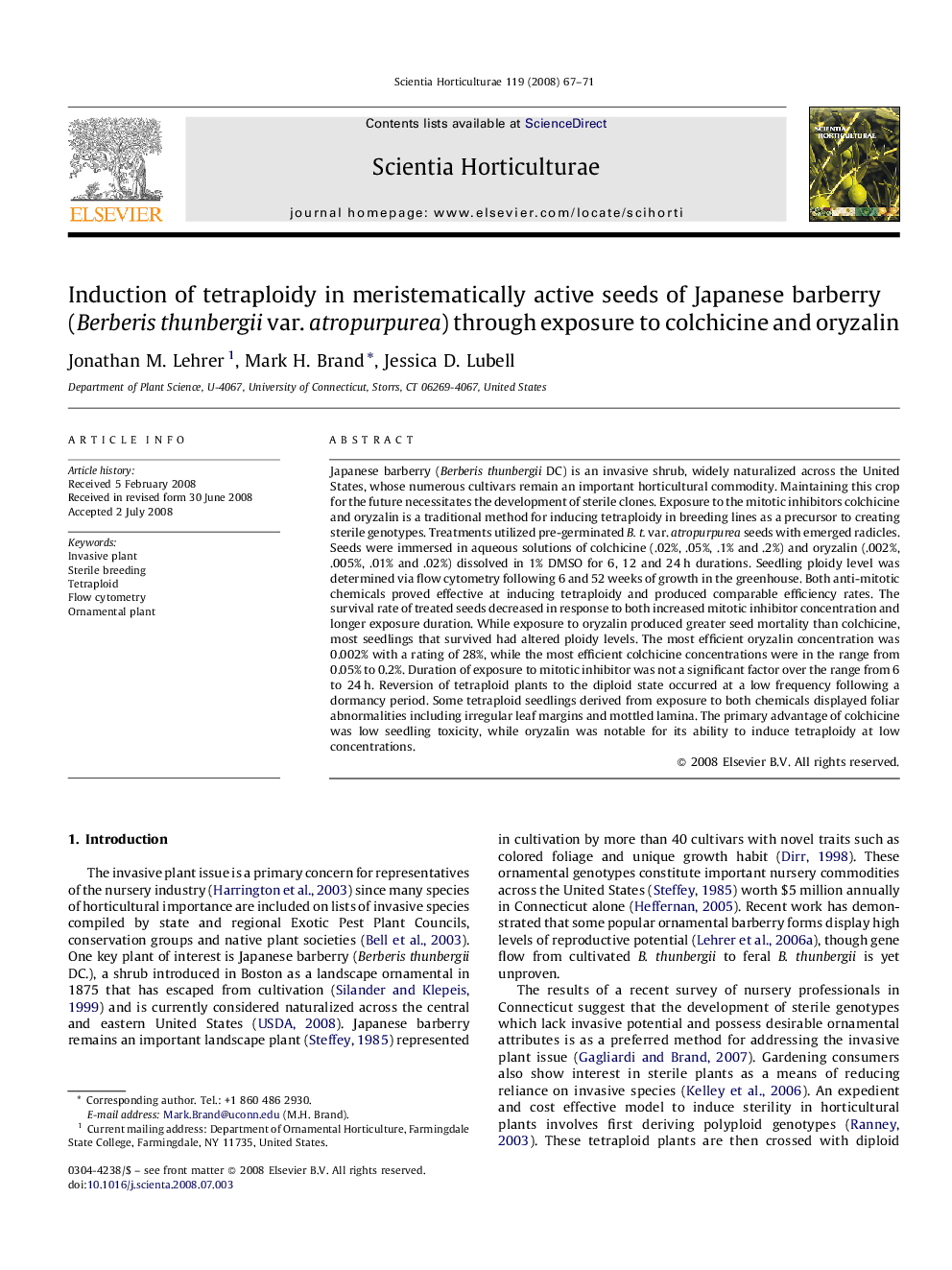| کد مقاله | کد نشریه | سال انتشار | مقاله انگلیسی | نسخه تمام متن |
|---|---|---|---|---|
| 4569399 | 1331336 | 2008 | 5 صفحه PDF | دانلود رایگان |

Japanese barberry (Berberis thunbergii DC) is an invasive shrub, widely naturalized across the United States, whose numerous cultivars remain an important horticultural commodity. Maintaining this crop for the future necessitates the development of sterile clones. Exposure to the mitotic inhibitors colchicine and oryzalin is a traditional method for inducing tetraploidy in breeding lines as a precursor to creating sterile genotypes. Treatments utilized pre-germinated B. t. var. atropurpurea seeds with emerged radicles. Seeds were immersed in aqueous solutions of colchicine (.02%, .05%, .1% and .2%) and oryzalin (.002%, .005%, .01% and .02%) dissolved in 1% DMSO for 6, 12 and 24 h durations. Seedling ploidy level was determined via flow cytometry following 6 and 52 weeks of growth in the greenhouse. Both anti-mitotic chemicals proved effective at inducing tetraploidy and produced comparable efficiency rates. The survival rate of treated seeds decreased in response to both increased mitotic inhibitor concentration and longer exposure duration. While exposure to oryzalin produced greater seed mortality than colchicine, most seedlings that survived had altered ploidy levels. The most efficient oryzalin concentration was 0.002% with a rating of 28%, while the most efficient colchicine concentrations were in the range from 0.05% to 0.2%. Duration of exposure to mitotic inhibitor was not a significant factor over the range from 6 to 24 h. Reversion of tetraploid plants to the diploid state occurred at a low frequency following a dormancy period. Some tetraploid seedlings derived from exposure to both chemicals displayed foliar abnormalities including irregular leaf margins and mottled lamina. The primary advantage of colchicine was low seedling toxicity, while oryzalin was notable for its ability to induce tetraploidy at low concentrations.
Journal: Scientia Horticulturae - Volume 119, Issue 1, 10 December 2008, Pages 67–71